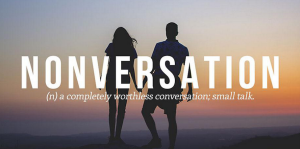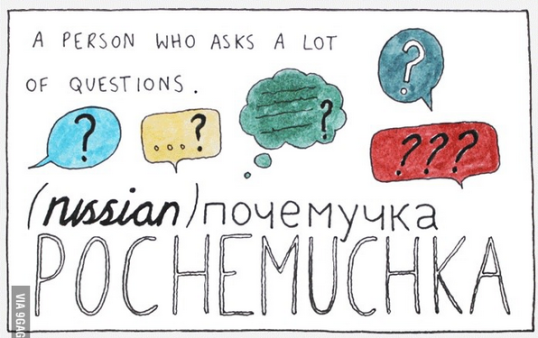“Time is money” said the American, but “no it`s gold,” says the Spaniard. Expressions differ from culture to culture but a greater difference is that in how time is viewed and “practiced” from culture to culture . Since coming to Argentina, I must say I am quite adapted to how time works but there are always exceptions (meaning anything having to do with the dreaded word: tràmite.) I met an American traveling around the world in Buenos Aires, his first stop. He was surprised that I arrived 15 minutes late to meet him. Although I am much more loose with time than I used to be, I was still worried he would be bothered that I was late, but on the contrary. To him, me arriving 15 minutes late was “on time” compared to the average of 45 minutes late he had calculated with the Argentines he had met. “Forty-five minutes, is that all?” you think. Any North American or Northern European living in this “time chaos” have many stories of their own!
Argentina is a place where the lack of systems and infrastructure sometimes (always when related to a tràmite) make things take longer than you want, by American standards that is. It`s not just that it takes longer, sometimes you wonder if it will happen at all. There have been so many times when I have planned several “appointments” to see friends, but then all plans were thrown out the window when the first appointment started two hours late. Or going to a store and the salesman is not in a hurry to check you out, as working quicker is no guarantee for more profit nor is that the priority. Or what about those weekend nights when you return as the sun is rising? A club or bar does not get busy until 2 am and family parties go all night with even the young kids pulling all-nighters. And going to a restaurant or cafe is a real blessing as you can sit there for hours without complaint. This would be unheard of in the US without leaving a nice tip. This is Argentina. You love and hate how time works. It depends on where you come from and/or how tied you are to it.
Linear cultures are those who plan ahead, schedule, organize, are results oriented and do one thing at a time generally. These are profit-oriented societies where time is precious and viewed as even scarce. Time moves fast and if you want to benefit, you have to move fast with it. Americans, Swiss and Germans are in this category. According to the article “How Different Cultures Understand Time” from the Business Insider, Americans are people of action, and they cannot bear to be idle. They view the past as gone and the present moment as an opportunity. Argentina is considered a Multi-active culture–lively, people who do many things at once, planning their priorities not according to any time schedule but instead on the potential thrill or importance of each appointment. These cultures are emotional and people/relationship oriented. They make decisions based on feelings where linear cultures stick to the facts. Other cultures in the multi-active category include Italians and Arabs. The third category are Reactive cultures, those cultures that prioritize courtesy and respect, always listening (instead of talking like the multi-active) and carefully reacting to others` proposals. In this group, face to face contact is important, statements are promises, and the people are very harmony oriented. The Chinese, Japanese and Finns belong to this group.
There is also a “cyclical view” of time practiced in Eastern cultures where time is viewed neither as linear nor event/relationship oriented. With cyclical time, the sun rises and sets each day; the seasons follow one another year after year, and people grow old and die, but their children ensure that the process continues. Time is not scarce when time is cyclical and there always seems to be an unlimited supply of it. Asians do not see time as racing away as it would with a linear lens, but instead they view time as coming around again in a circle, where the same opportunities, risks and dangers will re- present themselves later, when you are wiser. Westerners instead are accustomed to making quick decisions and if a lot of time has passed without making a decision or producing something, it is often viewed as “wasted” time.
Although linear and cyclical cultures are very different, they both still see the past as something we have put behind us and the future as something that lies before us. In Madagascar, however, the opposite is true. The Malagasy people view the future from the back of their heads, or passing from behind. Instead it is the past that stretches out in front of them, because they can see it. They can look at the past, enjoy it, learn from it, and even “play” with it, such as by consulting their ancestors or even digging up their bones!
If you are planning to live or work abroad, you can never really be prepared for how time is viewed differently until you live it and learn to love it (although complaining is still allowed once in a while!) Just a few differences between English and Spanish that I have encountered when talking about time are the following:
- English calls it “wasting time,” where the equivalent in Spanish is “to lose time.” In Argentina for example, if you do not produce something or make the most of your time, at least there is a hope that you enjoyed yourself and/or relaxed a bit; this is the only thing that would have been “lost” for example.
- To make time in English is to reserve time to do something else, surely something productive. Time is structured and organized so you “set aside” two hours a week to study English for example (hint hint for those students out there!) Making time in Spanish (haciendo tiempo), however, is related to “killing time”–like waiting for your flight at the airport.
- El tiempo (the time) also means “the weather,” where these things would never be confused in English. Time is time and weather is weather, period!
- And “ahora” means “now” right? Not always! It could mean “later” and remember that there is always time to do it “tomorrow… mañana, mañana.”
The list goes on as do your personal stories. Feel free to share them on a comment. I`d love to hear more about your personal experiences related to time and culture!
The main sources for this post include the following articles:
Posted in
Argentina,
Culture,
English,
Language,
Language Insight,
Life,
Lifestyle,
Marketing,
Society,
Sociology,
Spanish and tagged
Argentina,
clock,
cyclical time,
Easter culture,
EL tiempo es oro,
linear culture,
Madagascar,
make time,
Malagasy people,
multi-active culture,
perder tiempo,
reactive culture,
time,
TIme is money,
tràmite,
United States














































